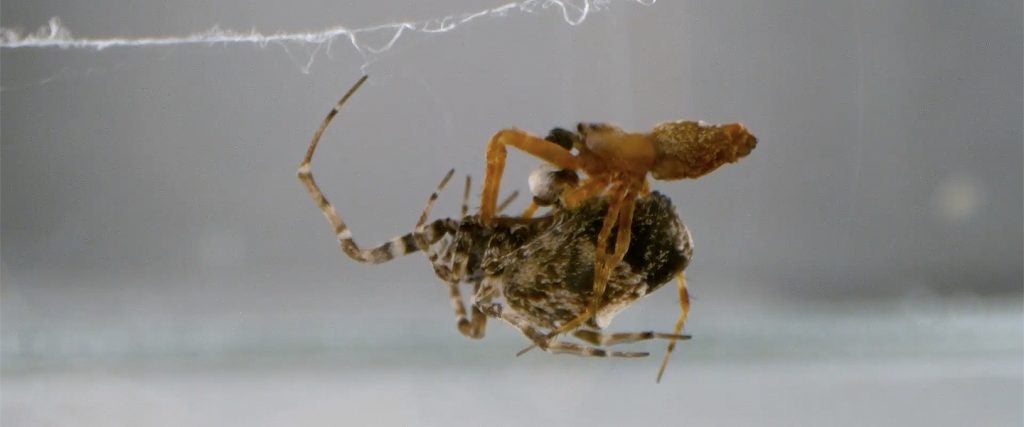After sex, a species of male spiders immediately run for the hills. As familiar as that post-coital scenario may sound to some of us, the big difference between Philoponella prominens spiders and humans is that the female arachnids typically want to kill and eat their mates afterwards. So the males have a pretty good excuse for bailing.
The acrobatic move to avoid sexual cannibalism was recently observed by Shichang Zhang, an associate professor at Hubei University in China, and detailed in a new study published in the journal Current Biology. “I think it is mainly to escape the female, catapulting and spinning make it difficult for the females to catch it,” Zhang told CNN.
The practice of female spiders devouring their mates after sex is well documented, and many animals are known for evolving in clever ways to dodge such threats. “Many of these mechanisms are employed for prey capture or for predator avoidance,” the study explained. “However, such superfast actions have not yet been reported as a means to dodge sexual cannibalism.”
In order to gauge if male spiders had evolved to develop any defense mechanisms for sex, Zhang and his team observed 155 successful matings in a lab setting, using a high-speed camera to document any tiny, sudden movements. (Male orb-weavers are about three millimeter long, whereas females are about double their size.) In all of these lovemaking sessions, 152 male spiders were able to push their front legs against the female spider and catapult themselves away at a rate of 88 centimeters per second. To put that in perspective, the catapulting was so fast that, prior to the study, other cameras couldn’t record it accurately, per Zhang.
As for why the three other male spiders couldn’t make the post-coital jump like their peers, Zhang explained to CNN that “their sensing capability to danger is low, or they have been exhausted during mating, or just could not perform the catapult.” So, it’s possible the little guys needed a minute to recover, but unfortunately, a pause for post-nut clarity isn’t a luxury afforded to the male spider.
Zhang suspects female spiders are such horny, ruthless man-eaters because of mate selection. The female spider has a sac in her reproductive tract called the spermatheca, which she uses to hold sperm before deciding if it gets to meet her egg. If she doesn’t want to use it, she can discard or kill the sperm. Zhang speculates that females may accept the sperm of males that are able to catapult, but may decide to get rid of the sperm of those she easily cannibalized.
Finally, Zhang notes that female spiders rarely leave their communal webs, while male spiders will mate across many webs. Plus, male spiders typically repeat the cycle of having sex, catapulting away and then coming back for sex again up to six times before moving on to another partner.
So catapulting male spiders aren’t the arachnid fuckboys we may think they are. No, these bad boys are willing to risk their lives for sex, and then crawl right back for more.

